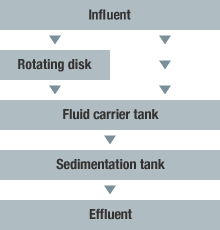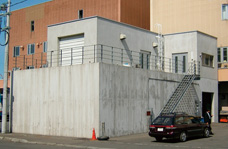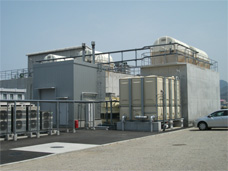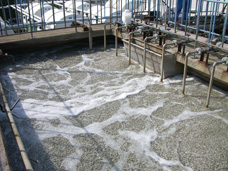- HOME>
- Plant Engineering Division>
- Biofilm Method Wastewater Treatment Equipment: Installed Examples of AQUACUBE
Plant Engineering Division
| Influent to carrier tank |
Effluent | |
|---|---|---|
| BOD | 840 | 300 |
| SS | 100 | 300 |
| COD | 290 | — |
| n-Hex | 110 | 30 |
- [Hokkaido]
-
- Installation in 2002
Reduction in the size of the facility and in the amount of excess sludge.
In the activated sludge process, a large facility area is required and a large quantity of Excess Sludge is produced.

By adopting AQUACUBE, miniaturization of the treatment facility and reduction of Excess Sludge is achieved.
Flowsheet
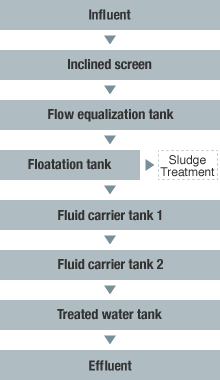
| Influent to carrier tank |
Effluent | |
|---|---|---|
| BOD | 1300 | 20 |
| SS | 350 | 30 |
| COD | 400 | 20 |
| n-Hex | 180 | 15 |
- [Kagawa Pref.]
-
- Installation in 2007
It can function to immobilize oil and fat degrading bacteria.
In the activated sludge process, there were some concerns about maintaining stable sludge conditions to due to the high amount of oil and fat contained in the drainage.

The combination of SKBiO and ACUACUBE enabled immobilization of oil-degrading microorganisms and consequently realized stable treatment of oil and fat.
Flowsheet
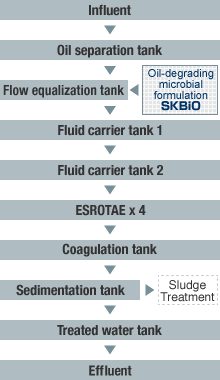
| Influent to carrier tank |
Effluent | |
|---|---|---|
| BOD | 300 | 30 |
| SS | 600 | 30 |
- [Ibaraki Pref.]
-
- Installation in 2008
Realized stable treatment by improvement of the existing clogged contactor in aeration tank.
As the load for the existing contactor aeration tank was high, and sludge clogged in contactor material, making the treatment unstable.

By adopting AQUACUBE, here were no more clogs of the contactor material, making stable treatment possible.
Flowsheet
